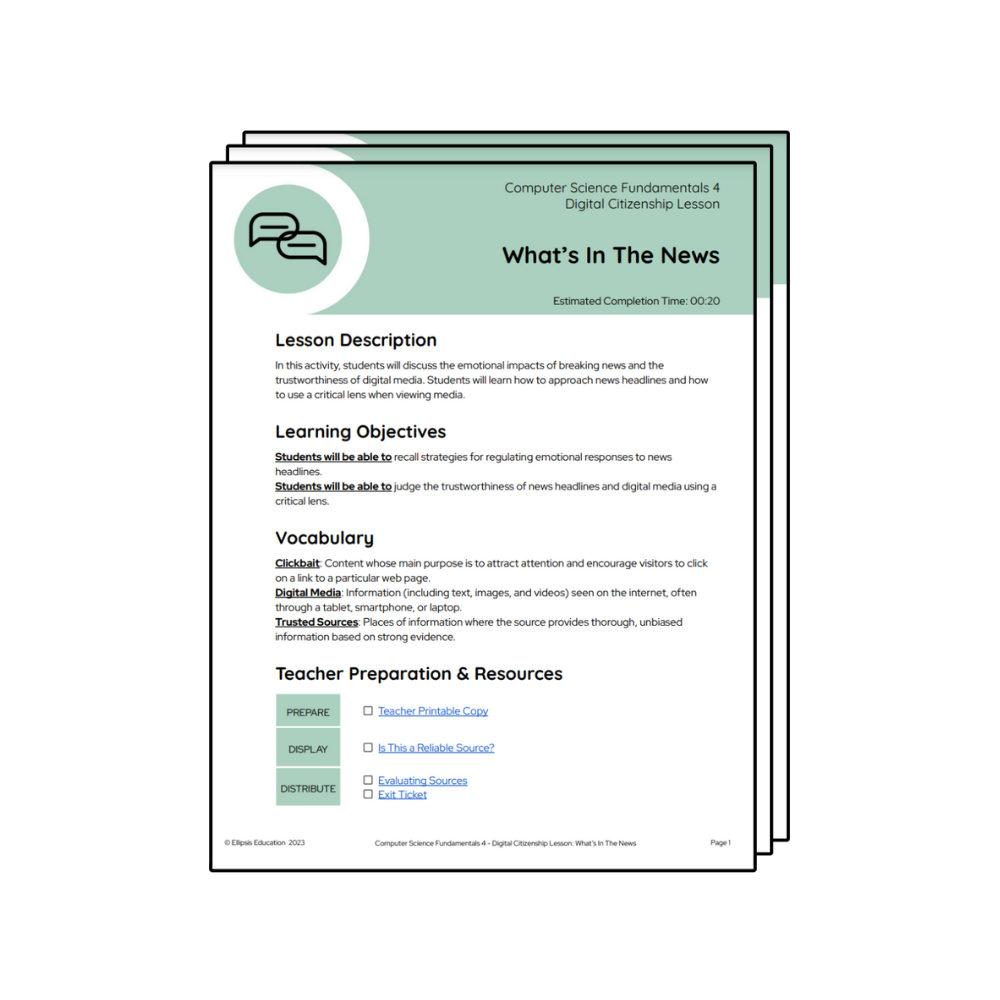Critical Thinking in Education
Critical thinking is an important skill for students, and computer science is a great way to introduce it. Ellipsis Education has computer science curriculum for all age levels. We put learning in context so a teacher, not a machine, helps students connect apply technology skills in their lives.
Teaching Critical Thinking with Ellipsis

Any Teacher Can Teach
From scripted lesson plans to robust training to continuous learning, Ellipsis helps teachers build confidence and capacity.

Everything in One Place
The Curriculum Delivery Platform houses all your computer science lessons – no more piecing together free resources.

Teacher-Led
Just like any reading or math curriculum, Ellipsis leverages your best resource: teachers.

Beyond Coding
Ellipsis lessons develop the attitudes, knowledge, and skills necessary to thrive – in academic settings and beyond.
Critical Thinking Activities for Students
Download a free lesson plan from Ellipsis Education to use in your classroom.

Lunar Loops
In Lunar Loops, students will participate in a hands-on game introducing the concept of loops.

Treasure Map Coordinates
In Treasure Map Coordinates, students will code a sprite to move across a treasure map using the coordinate plane.

What’s in the News?
In What’s in the News, students will discuss breaking news and the trustworthiness of digital media.
Ready to develop your students’ critical thinking skills?
Computer science courses from Ellipsis Education can help. We ensure teachers have the curriculum, resources, and support they need to confidently teach computer science – and critical thinking.
